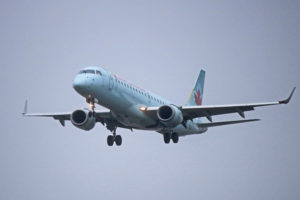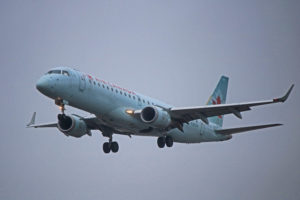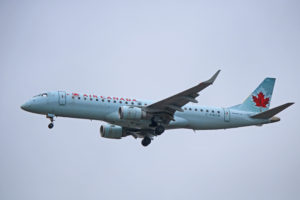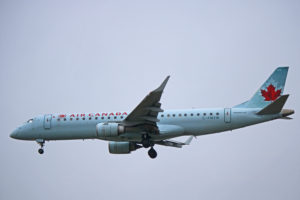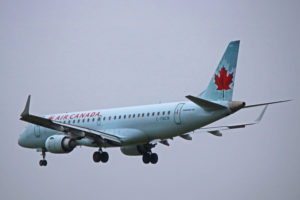 Just when I think we’ve photographed all of Air Canada’s Embraer ERJ-190 aircraft, we find another. C-FMZW has been with the airline since 2007 and will be phased out over the next few years. We photographed this E190 on October 7, 2018 while plane spotting at Toronto Pearson International Airport (YYZ).
Just when I think we’ve photographed all of Air Canada’s Embraer ERJ-190 aircraft, we find another. C-FMZW has been with the airline since 2007 and will be phased out over the next few years. We photographed this E190 on October 7, 2018 while plane spotting at Toronto Pearson International Airport (YYZ).
For full-size, high resolution versions for any of the photos in the image gallery, simply click on the individual pictures. See below for more detailed information on C-FMZW, the Embraer 190 model in general and the airline.
Image Gallery
C-FMZW
Embraer E190
Air Canada
Resources
C-FMZW Air Canada Embraer 190 Image Gallery
Want to use one of these photos for your website, blog or news site? They’re free to use – take a look at our Photo Usage Policy.
C-FMZW
C-FMZW was delivered to Air Canada on November 7, 2007 and remains one of 20 Embraer ERJ-190 models in the main fleet of the Canadian airline. Air Canada is in the process of phasing out their E190 aircraft, replacing them with Airbus A220 and Boeing 737 MAX 8 airliners. This airplane is configured for a maximum total of 97 passengers with nine seats in business class and 88 economy class seats.
On April 3, 2014, C-FMZW was flying from Halifax, Nova Scotia to Ottawa, Ontario. On descent into YOW, crew received several spoiler related messages. The aircraft was brought in for a safe landing but the incident resulted in the replacement of the power supply unit and network interface controller’s processor module.
Two and half years later, the E190 was flying from Toronto, Ontario to Regina, Saskatchewan on October 31, 2016. Those on board received a Halloween surprise as the plane landed with a ghost seemingly pushing a trolley down the aisle from rear to front. Three passengers were injured by the runaway trolley, two seriously.
On June 19, 2017, C-FMZW was flying from Toronto to Winnipeg, Manitoba. On descent toward YWG, the autopilot and autothrottle failed with both flight management and guidance systems ceasing to function. Airspeed indications were lost and the yaw damper became inoperative. The crew were able to reset the systems and the aircraft landed safely at its destination. As a result, the modular avionics unit netwrk interface card was replaced.
Most recently, on July 28, 2018, the Embraer 190 was flying form Toronto to Regina. On the climb out of YYZ, a change in the right side engine’s sound was detected. After traveling 400 miles, it was decided to turn back to Toronto after the right side engine began to vibrate. As a result, the right side engine was replaced.
Embraer ERJ-190ER
The Embraer 190 performed its maiden flight on March 12, 2004 and was first delivered to launch customer JetBlue in 2005. JetBlue remains the top operator for this kind of aircraft. The E190 is 36 metres or 119 feet in length with a wingspan of 29 metres or 94 feet. At the tail, the airplanes stands eleven metres or 35 feet in height. The flight range is 4,537 kilometres.
Air Canada
Air Canada was founded as Trans Canada Air Lines in 1937. The name was officially switched on January 1, 1965. There are nearly 190 aircraft in the main fleet with over 400 when subsidiaries are included. The largest in the fleet is the Boeing 777-300ER. The airline flies to close to 210 destinations around the world (350 with subsidiaries included).
Headquartered at the Air Canada Centre on the grounds of Montreal Pierre Elliott Trudeau International Airport (YUL) in Dorval, Quebec, the airline is a founding member of the Star Alliance. Other founding members include Lufthansa, Scandinavian Airlines, Thai Airways and United Airlines. There are now 27 full member airlines worldwide.
Resources
Winnipeg International Airport
